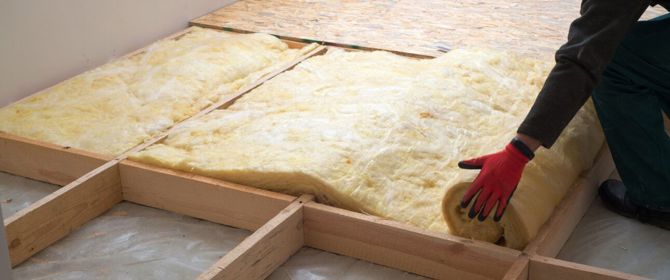Guide to Saving Energy at Home
Take a look at our ultimate guide to reducing home energy usage and lowering your bills!
February 2021
| Money Saving

10% of heat loss can occur through the floor of un-insulated property. Insulating the floorboards on the ground floor of your home could save you approximately £40 per year on your home energy bills.
Find out more about floor insulation and its benefits below.
Floor insulation is the process of adding insulating material, such as mineral wool or rigid foam, beneath the floorboards of your property in order to reduce heat loss. In most cases, floor insulation is only carried out on the ground floor of a property – however the measure will benefit the entire house.
Floor insulation can be performed DIY if you feel competent and confident in completing the job. You must also ensure that you are complying with the relevant building regulations in your area. However, if you do not feel up to the task, you can seek help from a professional installer.
The nature of the floor insulation you’ll need for your home will depend on the type of flooring it has. In the UK, there are two main kinds of floors that properties can have.
This includes:
Solid Floors
Most modern homes have solid concrete floors and can be insulated using rigid insulation foam. The foam can be fitted above the concreate, which usually causes rooms to heat up quickly in the morning. Alternatively, it can be fitted below the concrete floor, where it can store heat during the day and keep rooms warm at night. The recommended thickness for this type of insulation is 180mm.
It is usually recommended for the insulation process to be performed when the floor is being installed or replaced, however there are measures you can take if this isn’t the case.
Rigid insulation foam can be applied on top of the existing floor and chipboard flooring can then be placed over it. You should bear in mind that this can raise the floor level, so you’ll need to take measures such as trimming your doors shorter – you may also need to remove or relocate electric sockets and skirting boards.
Suspended Timber Floors
Can you spot ventilation bricks or air bricks below floor level on your property’s outside wall? If so, it is likely that your home has suspended timber floors. This type of flooring is mostly found in older homes.
Timber floors are usually insulated by lifting the floorboards and placing down mineral wool insulation. The recommended thickness for the insulating material is approximately 150mm for mineral wool or 90mm for rigid foam. Interestingly, there has been a recent innovation which could remove the need to lift floorboards altogether — a robot is used to apply spray foam insulation underneath the area. Keep an eye out for this technology as it could make insulating your floor significantly easier!
There are some alternative methods that you can use to reduce heat loss through your floors. These include:
The cost of floor insulation will rely on the scale of work required. However, it is estimated that costs can range between £520-£1300 if it is completed using a professional service.
The Energy Saving Trust estimates that savings of up to £75 per year can be made from floor insulation. It could also reduce your carbon emissions by up to 310kg.
Floor insulation is not the only way that you could save energy. Switching energy supplier could help you save by ensuring that your tariff is best suited to your needs.
You could try our energy price comparison tool today to find a suitable energy deal.
Alternatively, visit our energy guides for more advice on energy saving.
Related Articles
Take a look at our ultimate guide to reducing home energy usage and lowering your bills!
February 2021
In this guide, we’ll provide you with everything you need to know about home insulation.
October 2020
Get a comparison and start saving now